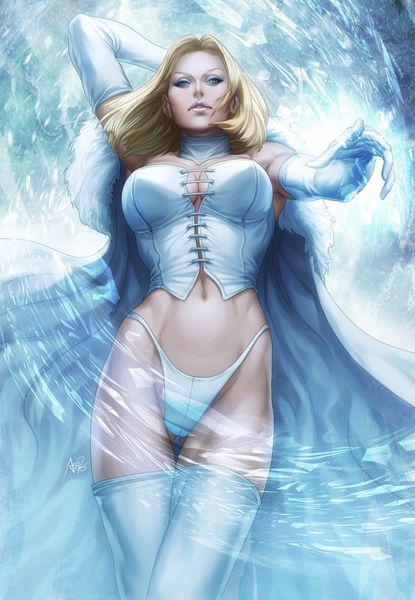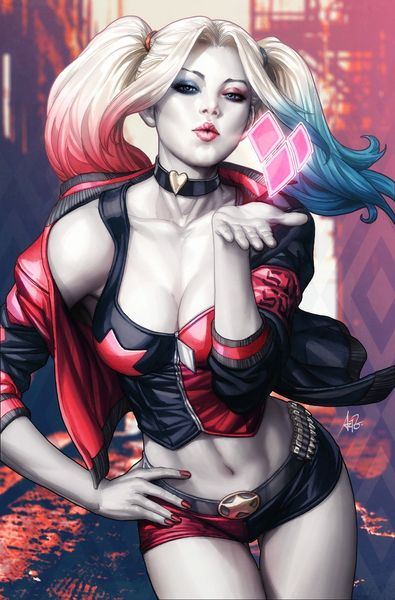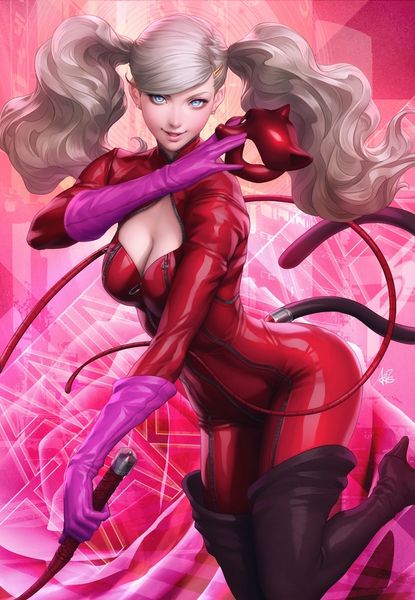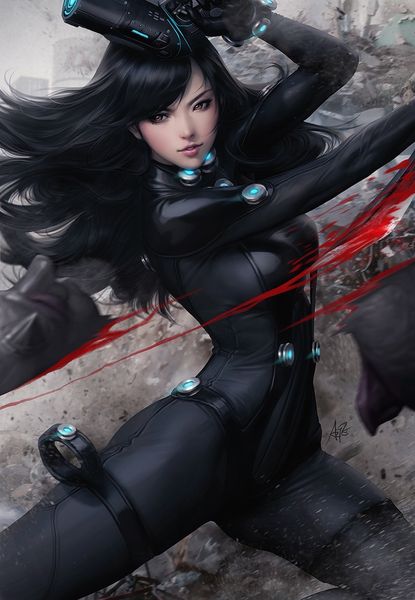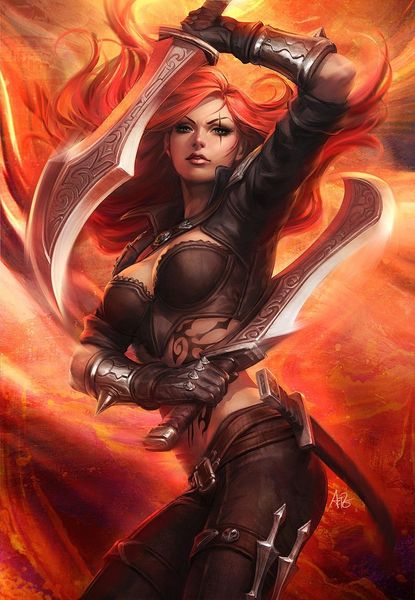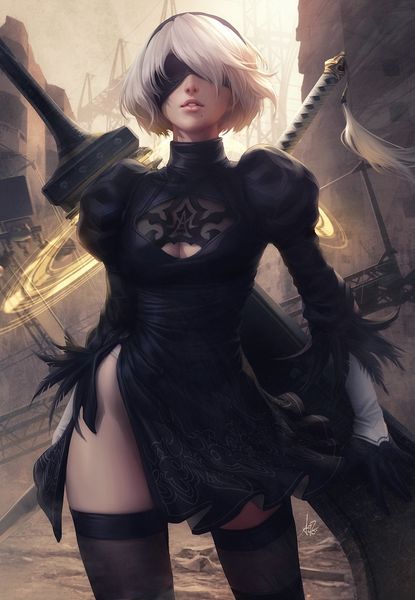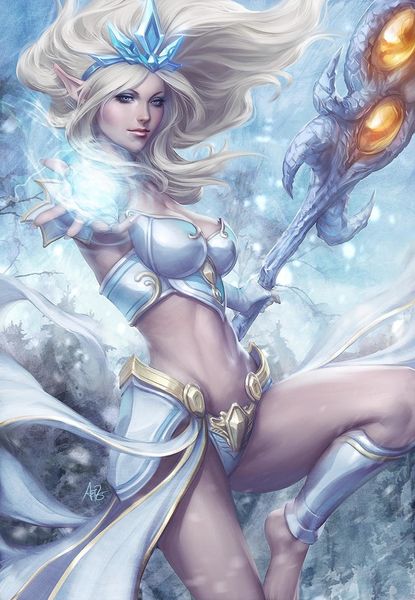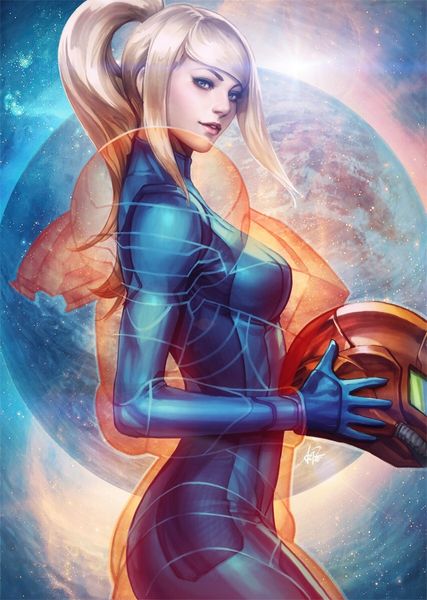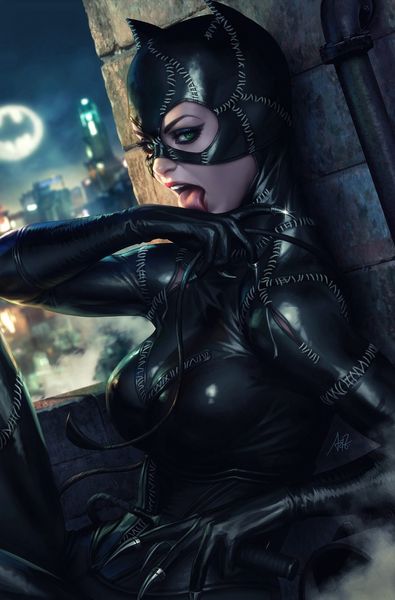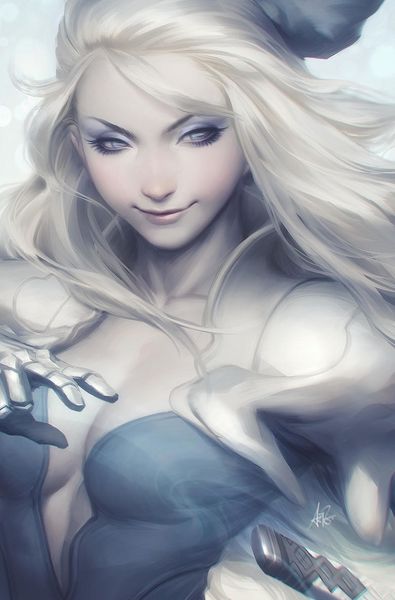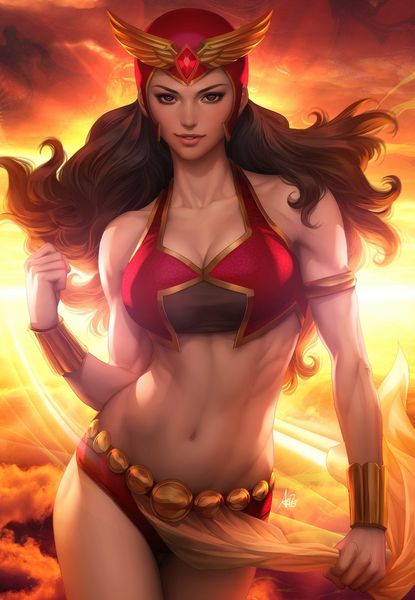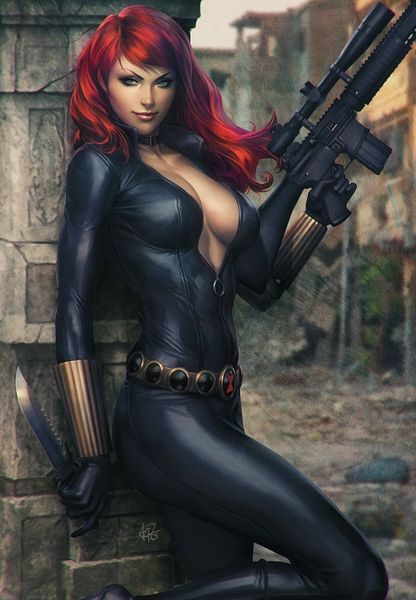
acrylic-paint
#
portrait
#
facial expression reference
#
character portrait
#
portrait image
#
portrait
#
acrylic-paint
#
figuration
#
male portrait
#
portrait reference
#
comic
#
likeness
#
facial portrait
#
digital-art
#
portrait art
#
erotic-art
#
digital portrait
Copyright: Modern Artists: Artvee
Curator: This is Stanley “Artgerm” Lau’s portrait of the Black Cat. Editor: It has that polished, almost hyperreal quality reminiscent of pin-up art, but with a clear comic book influence. She's striking, confident—very deliberately posed for the viewer’s gaze. Curator: Indeed. Her stance and the black cat suit harken back to classic femme fatale archetypes. Black cats, of course, have a long symbolic history, often associated with both good and bad luck, independence, and mystery, depending on the cultural context. Editor: And here, layered with that erotic charge we’ve learned to expect in popular imaginings of female superheroes or anti-heroes. The mask partially obscures her face, reinforcing the intrigue while simultaneously projecting a carefully managed identity. Is she in control, or is this pose another form of constraint? Curator: I see how the question of control arises in her imagery. The mask might symbolize a separation of identity, yet she makes direct eye contact with the audience and presents her body very confidently. This reflects Black Cat's comic history as one of few characters who knew Spider-Man’s real identity, thereby gaining agency in their relationship and taking away the ‘mask’ so to speak. In this light, her character design subverts and empowers classic cat symbolism by reclaiming its inherent sense of independence. Editor: It’s fascinating how pop culture imagery like this—while seemingly superficial—becomes a loaded battleground of gendered symbols and projections. It's worth asking why we continue to recycle certain poses, costumes, or symbolic shorthands to define female power, as well as questioning what the audience derives from these images. Curator: Agreed. Lau utilizes a symbol set, creating an archetypal image, that echoes back through pop culture to older depictions of mythological or symbolic characters of cunning. The artist taps into well-worn images and ideas, so viewers know what they are looking at on some level, as it mirrors past mythologies. Editor: I find myself lingering on that tension, between recognition and subversion. Ultimately, I wonder what kind of social commentary we're intended to tease from this work, if any. Curator: Perhaps there is not one meaning, rather, that there are many depending on what connections a viewer sees when faced with it, as they examine her presentation, posture and attitude.
Comments
No comments
Be the first to comment and join the conversation on the ultimate creative platform.
